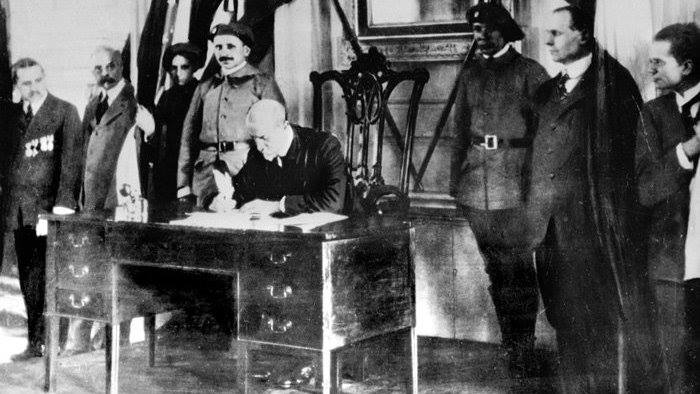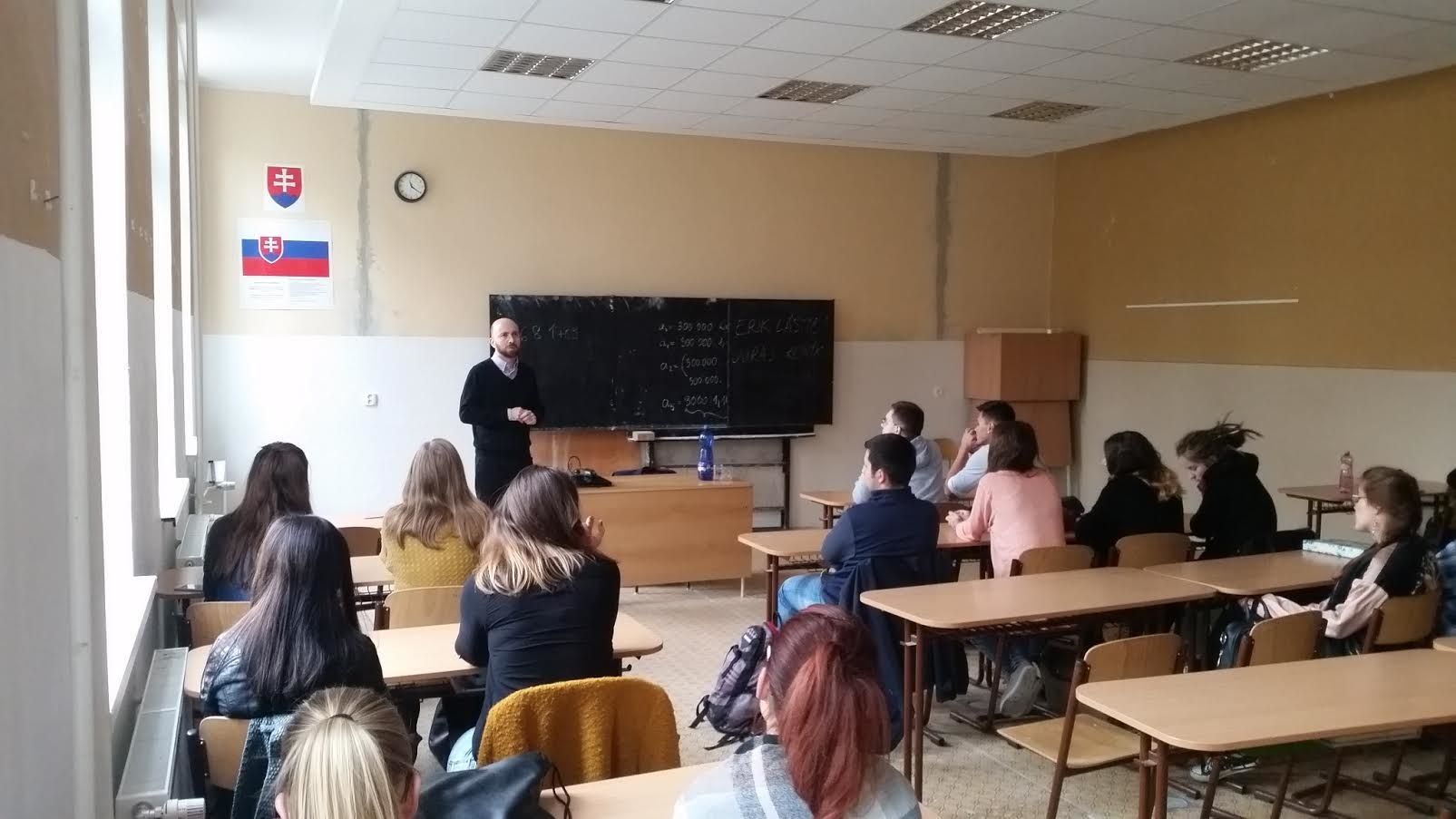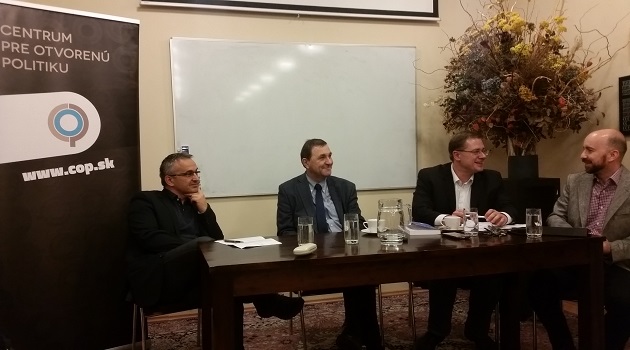Alexander Betts: Human migration will be a defining issue of this century. How best to cope?
This is the first time in its history that the European Union has faced a mass influx of refugees from outside the region. Each year, as UNHCR announced record numbers of displaced people, the general assumption – until recently – was that this is a problem for other parts of the world. However, rising displacement that had mainly affected the Middle East and Africa has finally reached Europe’s shores in significant numbers.
Many are beginning to ask whether the current crisis represents a temporary peak in displacement or presages a new, long-term trend. On what basis can we know? Will the dystopian images we see at the Hungarian-Serbian border of desperate families being beaten back by armed guards or the shocking image of Alan Kurdi become “the new normal”? The simple answer is: it depends.
It depends significantly on us, and the policies we, and our leaders, choose to adopt – nationally, regionally, and globally.
Asylum numbers do fluctuate over time depending on the state of the world, and Europe has witnessed significant spikes in numbers before. In 1992, the EU received 672,000 asylum seekers, and numbers remained high during the Bosnia conflict. In 2001, numbers again peaked at 424,000 following the Kosovo crisis and with many arriving from Somalia and Afghanistan. This year, numbers are likely to exceed those figures but not dramatically, especially when one considers that in 1992 there were 15 EU member states and today there are 28.
In general terms, the number of refugees in the world is broadly a function of the number of wars and human-rights-abusing dictatorships at any given time. Today, there are a series of internal and regional armed conflicts around the world. Most of these are in two regions, the Middle East and Africa.
There are humanitarian emergencies in Syria, Iraq, Afghanistan, South Sudan, Central African Republic, Somalia, Nigeria and, closer to home, in Ukraine. The UN high commissioner for refugees, António Guterres, has described a “world at war”. If we were able to address the root causes of those conflicts, the number of refugees in the world would decline significantly.
However, there are also grounds to believe that refugees and displacement are likely to become a defining issue of the 21st century. Two global trends in particular suggest this: fragility and mobility. In both cases, the international community is struggling to come up with viable collective responses.
First, a growing number of states are characterised by chronic fragility, with weak governance leading to an inability or unwillingness to ensure the most fundamental human rights of citizens. The Fragile States Index places countries such as South Sudan, Somalia, Central African Republic, Syria and Afghanistan towards the top of this list.
A significant trigger for this has come from failed state-building projects. Yet the world has had little answer to fragility; in addressing root causes the UN security council has been ineffective. Consequently, many people have been forced to cross borders in search of fundamental rights.
Second, there is greater human mobility than ever before. In 1970, there were 70 million international migrants; today there are well over 200 million. With globalisation, the opportunity and inclination to move is greater than ever. States continue to pursue the politically expedient fiction that they can unilaterally assert sovereign control over immigration but the reality is more complex.
Related to this, a common popular belief is that if, for example, Syrians exercise agency and choice to move onwards they must be “economic migrants” rather than refugees. The reality is different; there is nothing inconsistent about the idea that someone can be a refugee fleeing persecution and still take the opportunity to seek asylum further afield.
Throughout the crisis, a debate has been on whether it is a “migrant” or a “refugee” crisis. It has been important for the public to understand that most people coming to Europe have been from refugee-producing countries and that “refugees” have a particular set of rights under international law. Furthermore, people have a right to seek asylum, and have their claims to refugee status adjudicated.
However, the stark dichotomy between “refugee” and “economic migrant” masks a growing trend: that many people coming fall between those two extremes.
The modern global refugee regime was established at a particular juncture of history, in the aftermath of the Holocaust and at the start of the cold war. The 1951 convention on the status of refugees defines a refugee as someone fleeing “persecution”, based on race, religion, nationality, membership of a social group, or political opinion. The interpretation of that definition has adapted over time. But at its core was the idea of protecting people whose own governments were either out to get them or unable to prevent persecution by others. Today, the sources of cross-border displacement are increasingly complex, and many fit poorly with the 1951 convention.
Environmental change, food insecurity, and generalised violence, for example, represent emerging sources of human displacement. In strong states, the government can usually provide some kind of remedy or resolution to people affected by these types of crisis. However, much less so in fragile states. People who fall outside the internationally recognised definition of a refugee but are nevertheless fleeing very serious socio-economic rights deprivations might be called “survival migrants”.
In the contemporary world, a significant proportion of the people we attempt to describe as economic migrants fall into this category.
Survival migration has been an emerging challenge. Nearly a decade ago, Zimbabwean asylum seekers fleeing Robert Mugabe’s regime made up the largest group of asylum seekers in the world. Most British people would probably assume that at the height of the crisis between 2003 and 2009 the majority would have been refugees. However, in South Africa, to where the overwhelming proportion fled, only about 10% were recognised as refugees and up to 300,000 people a year were deported back to Zimbabwe. The reason for this was simple: they were not judged to fit the 1951 convention definition of a refugee. However, on ethical grounds, it was incontrovertibly cruel to deport people back to a country in a state of socio-economic and political collapse.
This example illustrates how current policy responses bypass engagement with long-term trends. The world as a whole lacks a vision for how to respond to the changing nature of displacement. So much of the current “crisis” is not a crisis of numbers but a crisis of politics. We need bold leadership that correctly and honestly articulates the causes of movement and outlines global solutions.
The 1951 convention offers an important and irreplaceable starting point. At a time when its core norms are being flagrantly violated, from Hungary to Australia, states need to publicly reaffirm its core principles. However, the drafters could not have been expected to anticipate every future scenario.
Five major gaps in the refugee regime stand out, which require long-term policy development at national, regional and global levels.
■ Access
How are people supposed to claim asylum? In Europe, asylum is based on an inherent contradiction; people are expected to arrive spontaneously in Europe, yet border management means the only means to do so is “illegal” entry. It is this paradox that underlies the smuggling industry, the chaos at Europe’s border, and the loss of life in the Mediterranean. Europe’s current proposals do nothing to address this.
One solution would be a humanitarian visa system that allows asylum seekers to travel legally to a country in which they can claim asylum.
■ Responsibility-sharing
The current refugee regime creates an obligation on states to provide asylum to refugees on their territory. However, it is vague on the obligations states have to support refugees on the territory of other states. This leads to a fundamental inequity, because responsibility is de facto allocated on the basis of proximity.
This becomes a particular problem when a crisis like the Syria situation occurs. Historically, this gap has been addressed through the UN secretary general calling for a global conference, usually run by UNHCR, at which a framework for cooperation is negotiated and commitments made. This is needed for Syria and the Mediterranean.
■ Survival migration
Increasingly, people fleeing fall into a neither/nor category. Many people leaving fragile states fall outside the 1951 convention definition but cannot in any way be described as “voluntary” migrants. If they cannot achieve the basic conditions for life and dignity in their country of origin, then, ethically, they are in an analogous situation to refugees.
In theory, international human rights law should offer some form of protection to such people but jurisprudence is generally conservative. One solution would be to develop a supplementary “soft law” framework in order to ensure meaningful, temporary protection of such people. If such movements are going to occur, all states are better off addressing them within a predictable, common framework.
■ Markets
The dominant approach to refugees is state-centric. It is dominated by a boats-and-camps logic that views refugees either as a border management issue or as a humanitarian concern. It is too often assumed that refugees need be an inevitable burden. Empirical research challenges this; with the right policies, refugees often make a positive economic contribution.
Rather than just providing food, clothing and shelter in closed refugee camps, we should be supporting refugee self-reliance through a development assistance fund that can simultaneously benefit refugees and hosts. In a transnational world, there is nothing incompatible about someone being a refugee and also having the opportunity to integrate into labour markets. Doing so offers a route to greater sustainability, and enables refugees to eventually go home and rebuild post-conflict societies.
■ People not in need of international protection
A major reason for the crisis of legitimacy of asylum around the world is that states have few practical ways to respond to people without a human rights-based or humanitarian claim. Removal and deportation processes are costly, and challenging both diplomatically and often challenging also from a human rights perspective.
In part, we have to accept that the price of asylum is a low level of non-removable people who are not in need of protection. However, there are also creative ways in which alternative channels can be opened.
In an era in which many states need workers, collective action by governments, including on skills matching, might enable alternative and democratically legitimate solutions to be created.
In the long run, states will be collectively better off working together than acting in isolation. But at national, regional and global levels, leadership is needed to build a vision for a global refugee regime adapted to the needs of a changing world.
Professor Alexander Betts is director of the Refugee Studies Centre at the University of Oxford. He is author of Survival Migration: Failed Governance and the Crisis of Displacement
(The Guardian 20. 9. 2015)
http://www.theguardian.com/commentisfree/2015/sep/20/migrants-refugees-asylum-seekers-21st-century-trend







